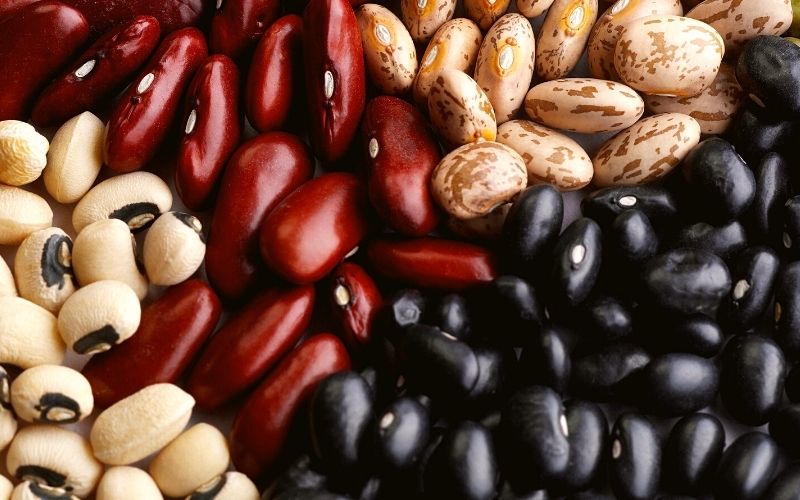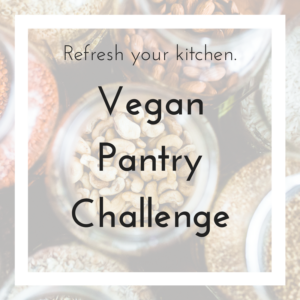Everyone, vegan or not, should eat at least a cup of cooked beans every day. And what’s the best way to stock your pantry with wholesome beans? In my opinion, nothing beats cooking dry beans from scratch.
In this post I will:
- explain why I consider it better to cook dry beans from scratch,
- teach you the one method I use to cook all beans,
- weigh in on some controversies (to soak or not to soak? to salt or not to salt?),
- provide detailed instructions for stovetop, electric pressure cooker (Instant Pot), and slow cooker bean cooking,
- and suggest the best way to store your beans once cooked.
And since no article about cooking beans is complete without a discussion of gas and farts, there’ll be some of that sprinkled in, too.
Jump straight to the topics you are curious about
Beans, peas, and lentils: what is this about?
To be clear: this is an article about cooking dry beans and chickpeas from scratch, not about cooking lentils.
- Beans tend to be shaped like an oval or kidney, and larger;
- peas like chickpeas tend to be spherical;
- lentils are more like tiny discs, some of which have had their outer layer removed and/or have been split in half (like red lentils).
Botanically speaking lentils are close to beans and peas, but they tend to behave different when it comes to cooking, and I will not discuss them in this article.
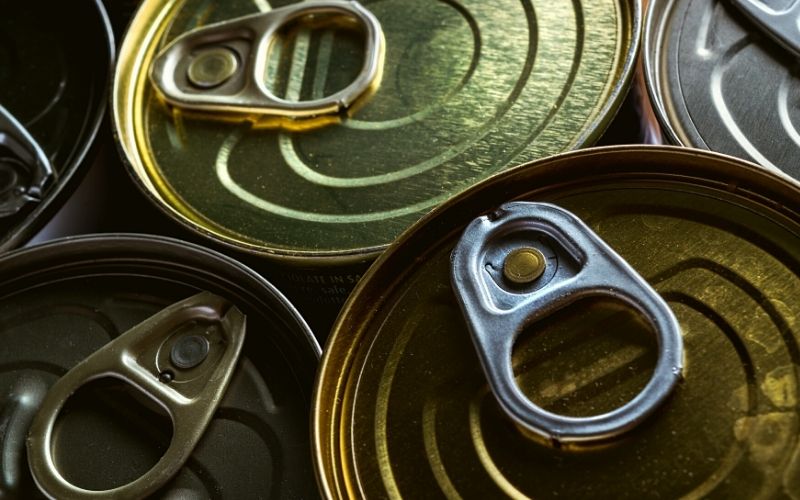
Why I recommend cooking dry beans from scratch?
Yes, canned beans are convenient… or so they seem. But really they’re just moving the work to a different form, person, or time.
Here’s why I prefer cooking dry beans from scratch:
- They’re cheaper (even when considering the cost of energy that goes into cooking them at home).
- They taste better, especially when fresh. Nothing beats a scoop of freshly cooked cannellini beans with a sprinkle of salt and a few drops of olive oil.
- They have less added salt (or none at all).
- They take less room in your cupboards.
- Dry beans are lighter to carry than canned beans, which makes it more manageable to get your groceries on foot or by bike as opposed to driving.
- Dry beans can be bought in bulk (zero-waste). Even the packaged ones come in reasonably diminutive plastic bags. Comparatively, canned beans come in metal containers that take a great deal of energy to recycle (including your effort carrying the blue bin to the curb). Worse: the cans are often lined with plastic that might leach into your food at high heat during the canning process.
- It’s just one more way to practice empowered cooking and take greater control and ownership of your food.
What if you can’t cook dry beans from scratch? Is it OK to eat canned beans?
I prefer cooking my own dry beans from scratch, but I’d rather have canned beans than no beans. I keep a few cans at the back of my pantry just in case, and more in my family’s emergency kit.
The process of cooking dry beans from scratch isn’t as involved as one might think. I think the total time is only about 15 minutes (between preparing the beans by soaking, setting up the cooker, putting the cooked beans away, and washing the pot). But I can see how it might feel overwhelming and just “too much” for many people right now. I get it.
If that’s you, just bookmark this article for later and go download one of my “instant meal plan” templates instead. No worries!
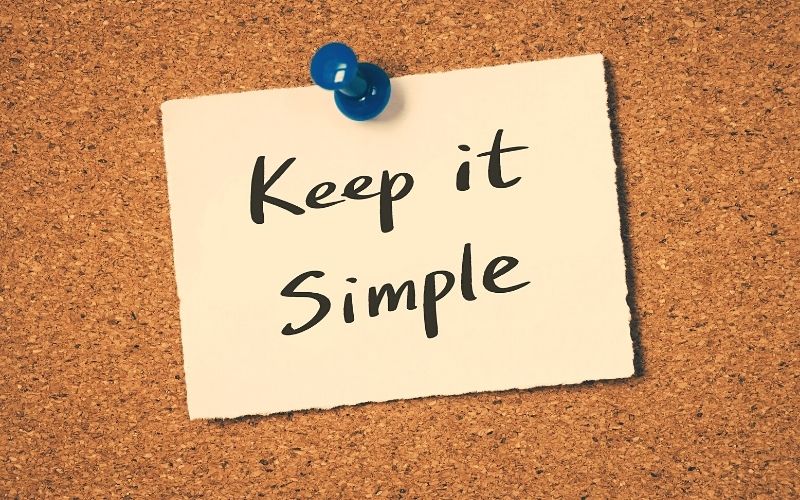
One method to cook them all
Some beans cook quickly while others take their time. Making matters worse, the same beans from different batches – or even from a single bag! – can cook differently. One could study the matter in fine detail and write a book on the topic, but I prefer to use my “one method works for most” approach, as I do for cooking whole grains.
As a general rule, that means I am comfortable with slightly overcooked beans. On occasion, there might be more “blow outs” (broken outer skins on black beans), but really that is a very distant consideration for me. My priority is to avoid undercooked beans, which cannot always be saved once the initial cooking phase is completed.
The most important thing for my family is to have fresh-cooked beans, and lots of them, without having to think too much about it. Accepting life with minor imperfections is what makes the practice of cooking daily meals at home (mostly) from whole foods and from scratch sustainable.
In short, here is my preferred method for cooking dry beans from scratch:
- Soak the beans overnight in lots of water.
- Rinse them.
- Transfer them to the inner pot of an electric pressure cooker (Instant Pot).
- Add water until the beans are covered by about 1 inch / 3 cm, and a chunk of kombu.
- Cook on high pressure:
- Chickpeas, 14 minutes.
- Black beans, 6 minutes.
- White beans, 7 minutes.
- Kidney beans, 8 minutes.
- For other beans, get Jill Nussinow’s excellent timing chart for a list of ALL the beans (plus veggies, whole grains, etc.). Worth the $5 investment! (I taped mine to the inside of my kitchen cabinets.)
- Let the pressure decrease naturally for at least 15 minutes before releasing any residual pressure. Carefully open the lid.
- Scoop the beans out into a Mason jar with some of their liquid. Add a lid and let them cool for an hour on the counter before refrigerating.
- Immediately eat those that don’t fit into my jars with a pinch of salt and maybe a few drops of olive oil.
For an explanation of those choices, and for variations, keep on reading.
To soak or not to soak when cooking dry beans from scratch
I prefer to soak beans for 6-12 hours then rinse them with fresh water before cooking for a few reasons:
- It decreases cooking time, which makes the process more energy efficient.
- If cooking on the stovetop, it decreases the amount of moisture released in my home.
- It decreases the amount of phytates which, though they aren’t bad for us, inhibit iron absorption. (To read: my views about Iron for vegans.)
- It increases nutrient availability as soaking triggers the early stages of sprouting.
- It possibly decreases gas.
Typically, I soak dry beans by putting about two cups of them in a big bowl on Friday night, so they are ready to cook Saturday morning. Based on the Vegan Meal Plan‘s weekly prescription, I typically cook two different batches of beans every week. Most of them go in composed dishes, but we also eat a bunch simply sprinkled on salads (or with a spoon). If there’s white beans on the menu, I love to make a bit more to include in my kids’ daily waffles.
What happens if you cook dry beans without soaking?
Cooking dry beans without soaking mostly takes longer, and I find the results less consistent. I hate removing the lid of the Instant Pot only to find out that my beans are undercooked! Plus, the beans may be less nutritious that way.
On occasion, I may find myself without cooked beans in the fridge or freezer. That’s when cooked beans come in handy to me.
If you wish to cook dry beans in an electric pressure cooker (Instant Pot) without soaking, you will need to at least double if not triple the time.
On the stovetop, it will probably take an extra 20 to 40 minutes. See instructions below.
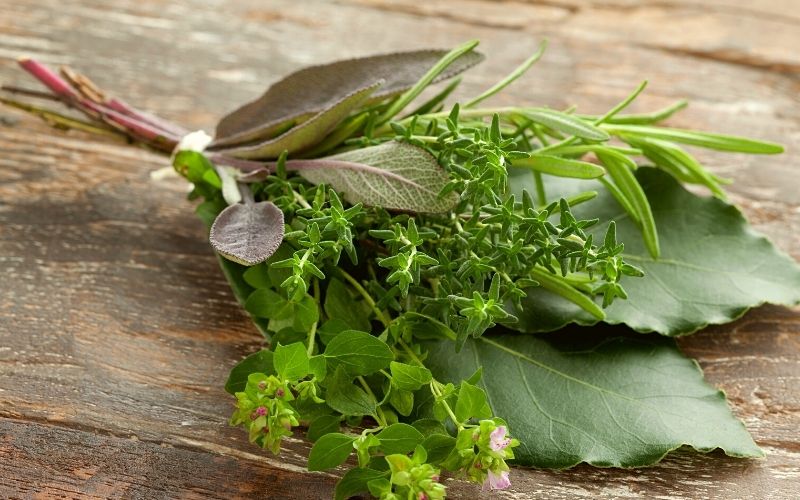
To salt or not to salt when cooking dry beans from scratch
Some food writers with a lot of time on their hands have extensively tested the impact of salting beans on cooked-bean outcomes. There have also been tests involving baking soda.
Though there appears to be some gains to be had in terms of reduced cooking time, better color, and retained shape of the cooked beans in some experiments when adding sources of sodium to the cooking water (salt or baking soda), I do not personally recommend salting beans to cook them from scratch.
Despite the salt industry’s efforts to seed controversy in the debate about the link between sodium consumption and disease, excess salt consumption remains the leading culprit of diet-related mortality. That’s true for people with non-elevated blood pressure, too – despite everything you might have heard to the contrary.
So why would I add a teaspoon of salt (almost 2,500 mg) to my beans when cooking them from scratch?
When living in an over-salted world, the less-explosive taste may takes a little while to get used to – but it’s still the right thing to do, and after a few batches you won’t be thinking about it anymore.
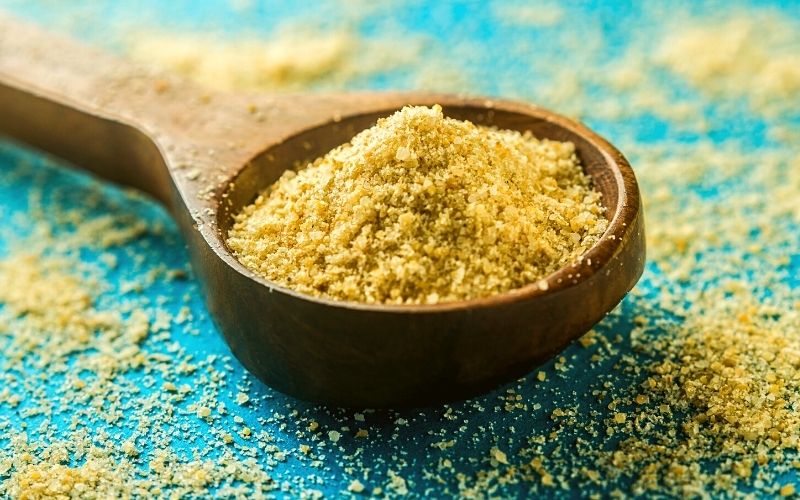
To season or not to season when cooking dry beans from scratch
I cook my beans from scratch as a substitute to canned beans, so I don’t personally add seasonings when cooking. Others like to throw in some seasonings straight into the pot to add flavor to the beans. Here are some ideas:
- Asafetida (sometimes spelled asafoetida, and also called hing) is a very pungent seasoning most commonly used in Indian food. Although it originates from the sap of a plant, it is mostly found as a powder that will be either light yellow or white. It’s used as a substitute for onion and garlic, which are not allowed in Brahmin and Jain cooking. Use just a pinch! Apparently it also helps reduce flatulence induced by beans (see below), though I have not seen an actual study on the topic. (Hit me up if you know of one.)
- Bouquet garni: this is a classic package of aromatic herbs like parsley, thyme, and a bay leaf. I have seen sage used often too. Tie the herb stems together (or put them in a little bag made of cheesecloth) and throw it in with the beans when cooking. Remove before draining.
- Add a carrot, an onion, or perhaps something like the green part of leeks to the cooking water, discard before draining.
- Some vegetable broth powder or bouillon paste would add taste as well… just be aware that most have quite a bit of sodium.
- Thinking about adding salt? See section above.
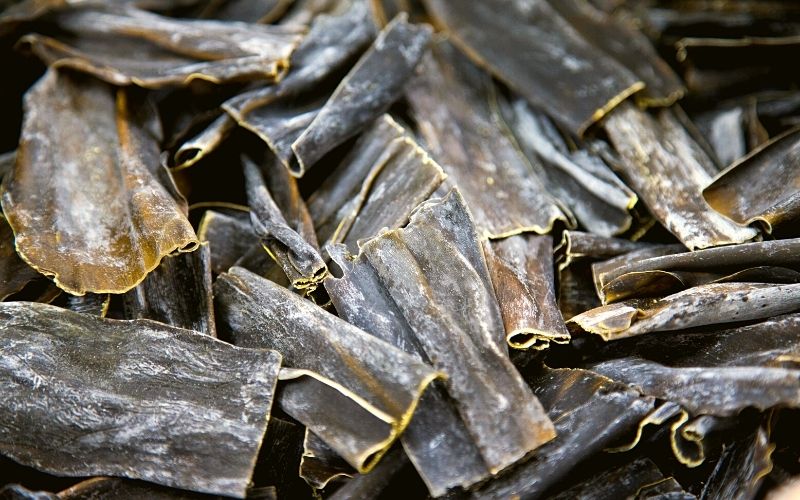
Why do I add seaweed when cooking dry beans from scratch?
Kombu is a sea vegetable very high in iodine, so much in fact that you should not eat it straight up. I add a small amount (approximately 2 square inches) to the water when cooking beans, making sure to remove it before draining the beans. If you regularly use salt in cooking, and more specifically iodized salt, no need to do this.
Stovetop, IP, or slow cooker: what is the best way to cook dry beans from scratch?
My favorite method for cooking beans is in the Instant Pot, but there are other very valid approaches.
How to cook dry beans on the stovetop?
- Check your beans for rocks, just in case.
- Soak the dry beans in plenty of water, 6 to 12 hours.
- Drain and rinse the beans.
- Place the beans in a big pot.
- Add water to cover the beans by at least 3 inches / 10 centimeters.
- Add a piece of kombu, if using.
- Add the lid.
- Bring the pot to a boil on high heat, then decrease the heat a bit to manage the boil.
- From the 30th minute onward, test your beans by pulling one out with a slotted spoon every few minutes. Keep on cooking until they are pleasantly tender. Don’t let them go mushy! (Actual time will vary between 30 and 90 minutes.)
- When the beans are done, turn off the heat and either drain the beans through a metal sieve or transfer them to a glass jar or container using a ladle to keep some of the cooking liquid. If freezing, make sure to use straight-walled jars and leave an inch of space at the top. Add a lid.
- Allow to cool before refrigerating or freezing.
How to cook dry beans in the Instant Pot (electric pressure cooker)?
Cooking dry beans from scratch is the top job of my Instant Pot. Even if that was the only thing it did, it would be worth it for me.
- Check your beans for rocks, just in case.
- Soak the dry beans in plenty of water, 6 to 12 hours.
- Drain and rinse the beans.
- Place the beans in the metal container of the electric pressure cooker.
- Add water to cover the beans by about 1 inch / 2 centimeters.
- Add a piece of kombu, if using.
- Lock the lid on.
- Cook on high pressure for the required time (chickpeas, 14 minutes; black beans, 6 minutes; white beans, 7 minutes; kidney beans, 8 minutes; get other timings from an authoritative source like Jill Nussionow’s timing chart).
- Allow pressure to release naturally for at least 15-20 minutes before releasing any residual pressure and carefully opening the lid.
- Remove the kombu.
- Either drain the beans or use a metal spoon to transfer them to glass jars or containers with some of their liquid. If freezing, make sure to use straight-walled jars and leave an inch of space at the top. Add a lid.
- Allow to cool before refrigerating or freezing.
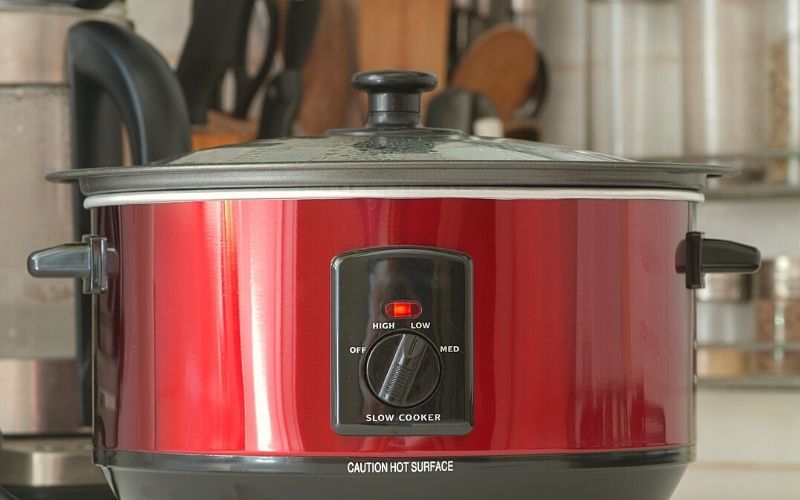
How to cook dry beans in the slow cooker – with a warning
Do not cook white, kidney, fava, black, or other kinds of oblong beans in the slow cooker. Though the risk is low, there is a chance you could make yourself very sick. Why? Some kinds of raw beans contain a protein called phytohaemaggluttinin (latin root words: plant – blood – protein that causes clumping up; translation: not good). Phytohaemagglutinin is toxic and needs to be broken down by cooking for a sufficient amount of time at a sufficiently high temperature. The greatest concentration of this protein is in kidney and white (cannellini) beans, but other beans – even black beans – have enough to cause issues for some. (Read about it in the FDA’s Bad Bug book, page 254.)
If ingested by a healthy person, the “enemy” will be detected once in the stomach, and severe gastrointestinal symptoms will follow, ejecting the toxin from the body. Some people’s bodies may not react strongly enough and grave consequences could follow. So why take a chance?
Unfortunately, slow cookers often do not reach a sufficiently high temperature, or do not stay there for a long-enough time to guarantee that the toxin will be destroyed. The other cooking methods described here (stovetop and electric pressure cooker) are more suitable for cooking those types of beans, and perfectly safe.
The only bean I suggest cooking in the slow cooker is chickpeas. It is in fact my preferred method to generate aquafaba (the “water of beans” that can be used to make delightfully airy chocolate mousse). Rinse 2 cups of chickpeas, add to your slow cooker with 5 1/2 cups of water and a 2-inch piece of kombu. Cook on low for 9 hours. Discard the kombu and strain the chickpeas out, keeping the aquafaba for your other purposes. (Freeze it in an ice cube mold for convenience.)
Lentils are also fine to cook in the slow cooker; in fact I often suggest doing that in the Vegan Meal Plans.
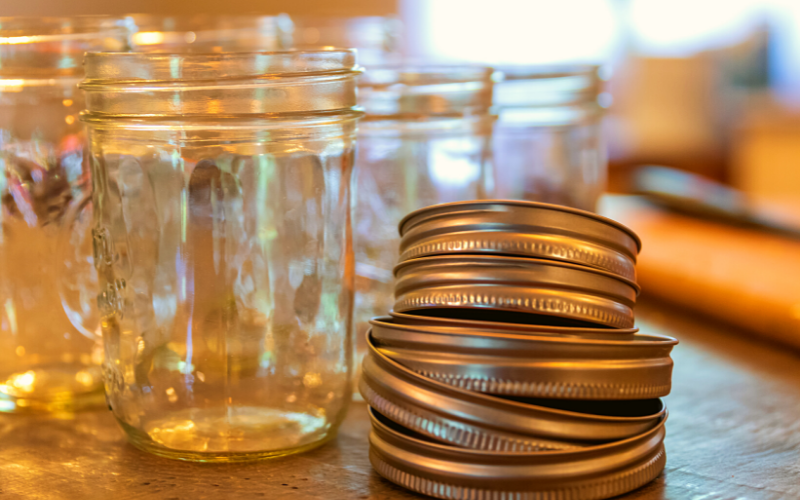
Straight-walled wide-mouth jars are my favorites.
Why some beans seemingly never cook or soften?
If you cook your beans for hours and they never soften, they might just be old. Try to buy beans from a store that moves a lot of them so they are more fresh, and don’t stockpile more beans than you can cook in the next few months.
Storing your cooked beans
Cooked beans MUST be refrigerated (they will keep for 5 days, perhaps more if unopened) or frozen.
Here are two good ways to store your cooked beans:
- Straight-walled, wide-mouth mason jars are my favorites. The 2-cup / 500 mL size is perfect for beans because it’s comparable to the amount from a can. If freezing, make sure to leave lots of space at the top for expansion (1 inch / 2 cm).
- Zip-top bags are a decent option, but you will need to allow the beans to cool down before transferring them. Label the bags carefully and lay them flat if freezing – the beans will thaw faster when you need them.
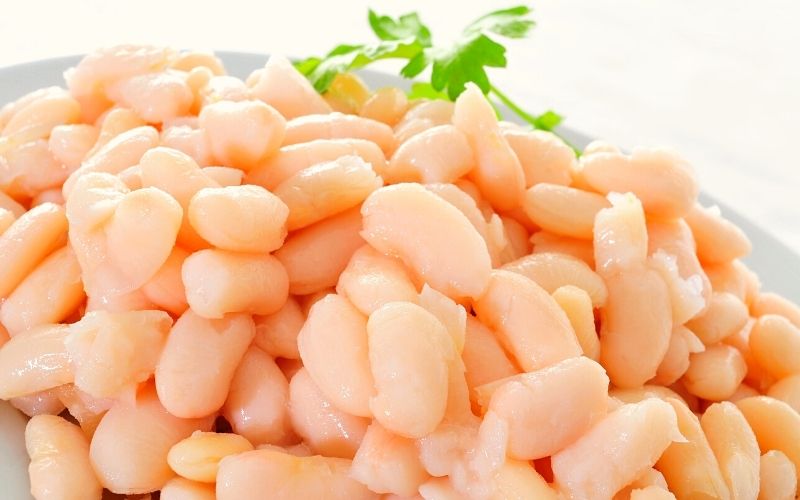
The best thing about cooking dry beans from scratch: eating them!
Make a plan to use some of your freshly cooked beans right after cooking them! They just have the perfect texture and taste then. If I don’t have an immediate plan for a meal, I’ll have a scoop of drained beans with a sprinkle of salt (literally just a few crystals) and a few drops of olive oil. Makes for an amazing snack! Mixing in a handful of peppery arugula would make it heavenly. The greens will immediately wilt when mixed in with the hot beans.
What about gas?
The experience of gas and flatulence seems to be highly subjective, and what seems to be wind storm to some may be just business as usual for others. I suspect that our respective culinary and cultural upbringings have a lot more to do with it than actual biochemical reactions to eating beans.
The vast majority of the population consumes far too little fiber, and likely doesn’t have the kind of gut microbiome that’s used to digesting legumes. Omnivores may thus feel a stronger reaction after having a big bowl of rustic bean soup. If one is experiencing painful bloating, of course a more careful and progressive approach to increasing one’s bean consumption is warranted. If it’s only the awkwardness of passing gas that bothers, it may be time to search Google for “how to fart quietly.” (I can’t believe I am writing this, but someone’s got to do it.)
Soaking the dry beans before cooking is supposed to increase their digestibility by starting to break down the beans’ sugars.
Asafetida (hing) and bay leaves are thought by some to decrease flatulence from bean consumption, but I haven’t found a science-backed source for this assertion. (If you know of one, please hit me up.)
Finally, I don’t want to say that vegans’ farts don’t smell bad… but if there is no rotting animal flesh in one’s bowels, the smell of passing gas would be far less offensive. At least, that is what I have observed when my husband transitioned to a 100% plant-based diet. Stop eating animals and see what happens.
Do whatever it takes to eat your beans
Your future health partially hinges on increasing your bean consumption to 1 to 2 cups per day. As Dr. Greger says, “just stick with it.”

